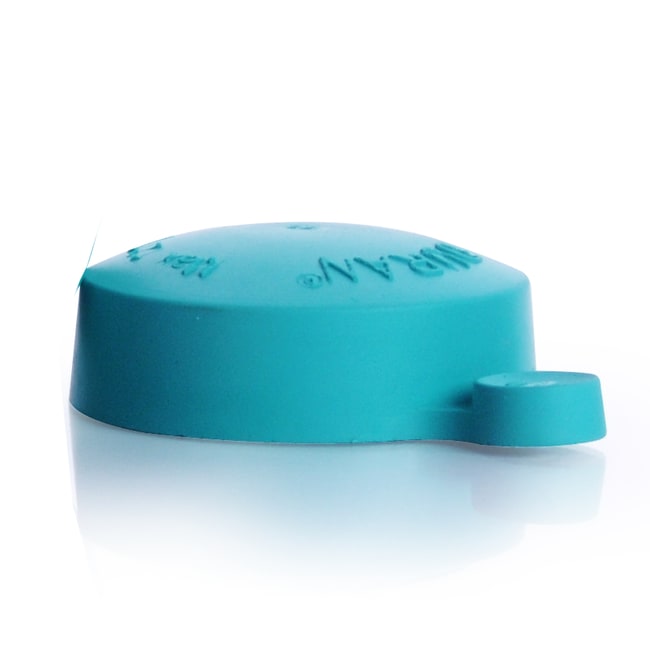Why DURAN™ Autoclave Glass Bottles and Vented Closures are the Safer Choice for Sterilizing Liquids in Labs
Introduction
In laboratories, sterilizing aqueous liquids is a critical step to ensure safety and prevent contamination. Using non-vented closures, such as sealed screw caps, during autoclaving can pose significant risks. These risks can lead to dangerous situations that not only jeopardize lab safety but also cause potential property damage and personal injury.
DWK Life Sciences DURAN™ Autoclave Glass Bottle and closures provide a reliable and cost-effective solution for this process. Made from high-quality borosilicate 3.3 glass, these bottles are equipped with an innovative rubber closure system that provides both self-venting and self-sealing capabilities. The ability to perform a visual check further enhances their effectiveness.
This lab reporter article explains why sealed lab bottles should be avoided in autoclaves and emphasizes the importance of using vented solutions for safe sterilization.
The Science of Pressure in Sealed Containers
When liquids are placed in glass bottles and sterilized in an autoclave, the process creates specific temperature and pressure changes. However, these changes can be dangerous if the container isn’t designed to vent properly.
The following occurs: when bottling and capping a liquid, air becomes trapped inside the bottle neck. During the sterilization process, the heat causes the air inside the sealed bottle to expand. Additionally, vapor from the heated liquid compresses and builds up additional pressure. As a result, the internal pressure can exceed that of the external pressure exerted by steam inside the autoclave chamber, by several atmospheres.
The Danger of Sealed Bottles
After the sterilization cycle is completed, the chamber begins to gradually release its pressure. This is called the “pressure release phase.” For bottles with self-venting closures, this gradual pressure release is well-managed. The self-venting closure allows the pressure inside the bottle to equalize with that of the chamber, while the liquid cools and vaporizes due to the change in pressure.
However, this is not the case with sealed containers. In a sealed bottle, the pressurized state persists long after the autoclave cycle has ended. The heat and pressure inside the bottle continue to remain high, as there is no venting mechanism to release the built-up pressure. As the liquid cools, the pressure inside the bottle does not decrease as effectively as it would with a vented cap, which can lead to serious problems.
Because the temperature and pressure inside the sealed bottle remain high, any sudden changes in the environment, such as the opening of the autoclave door or a sudden impact from another bottle, can cause the bottle to rupture. The glass could crack or shatter from thermal shock or mechanical stress. The sudden release of pressure during the rupture could cause violent splashing of the sterilized liquid, putting laboratory personnel at risk of burns or injury.
The Consequences of Bursting Bottles
The potential consequences of a sealed bottle bursting are severe. The glass shards can cause physical harm, and the contents can result in burns or scalds, especially if the sterilized liquid is hot. In a worst-case scenario, multiple bottles may rupture at once, creating a chain reaction that exacerbates the risk of injury and property damage.
The danger doesn’t stop there: lab equipment and other materials could also be damaged due to the force of the explosion or the resulting contamination from the spilled liquid. A single mistake could lead to costly downtime, repairs, and even hazardous situations that require medical attention.
Why Vented Bottles Are the Safer Option
The solution to these risks is simple - follow the correct safety procedures, wear the correct protective equipment and use appropriate, vented closures for autoclaving liquids. The DURAN autoclave cap is an excellent example of a design that minimizes risks. It is specially designed to fit over the beaded rim of the DURAN autoclave bottles. This cap allows steam and air to escape during the heating phase of the autoclave cycle, preventing the dangerous buildup of pressure inside the bottle.
At the end of the cooling phase, the cap automatically seals as a vacuum form inside the bottle. The higher external atmospheric pressure pushes the concave center of the cap downward, providing a visual confirmation that the container's integrity has been maintained. This design ensures that the bottle remains safe and sealed throughout the autoclaving process.
When the time comes to remove the cap, it can be easily removed by pulling on the side tab, reducing the risk of contact with the sterile liquid and ensuring the safety of laboratory personnel.
Conclusion
In conclusion, while DURAN autoclave bottles with self-venting closures provide a safe and efficient solution for sterilizing liquids, using non-vented closures, such as sealed screw caps, can be a hazardous practice. The risk of pressure buildup, thermal shock, and rupturing bottles can lead to significant safety issues, including personal injury and property damage. To maintain a safe working environment, it is crucial to use the proper vented closures when sterilizing liquids in autoclaves. The DURAN autoclave cap provides a reliable, user-friendly solution, providing laboratory professionals peace of mind while safeguarding the integrity and safety of the entire sterilization process.






